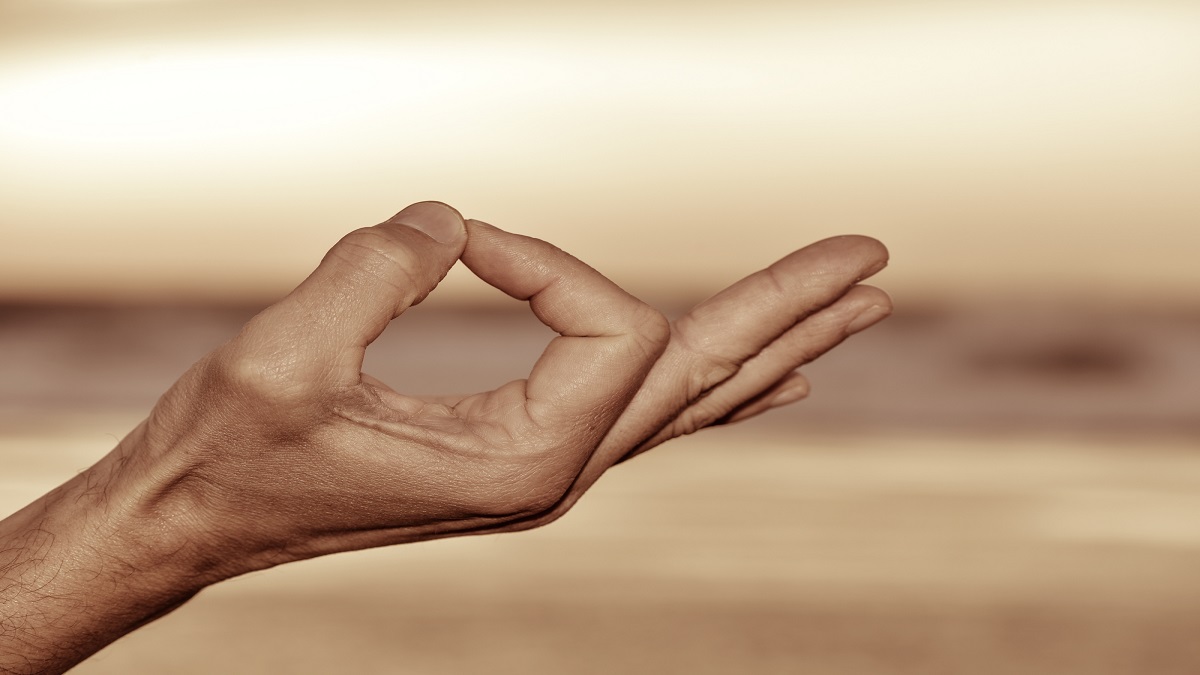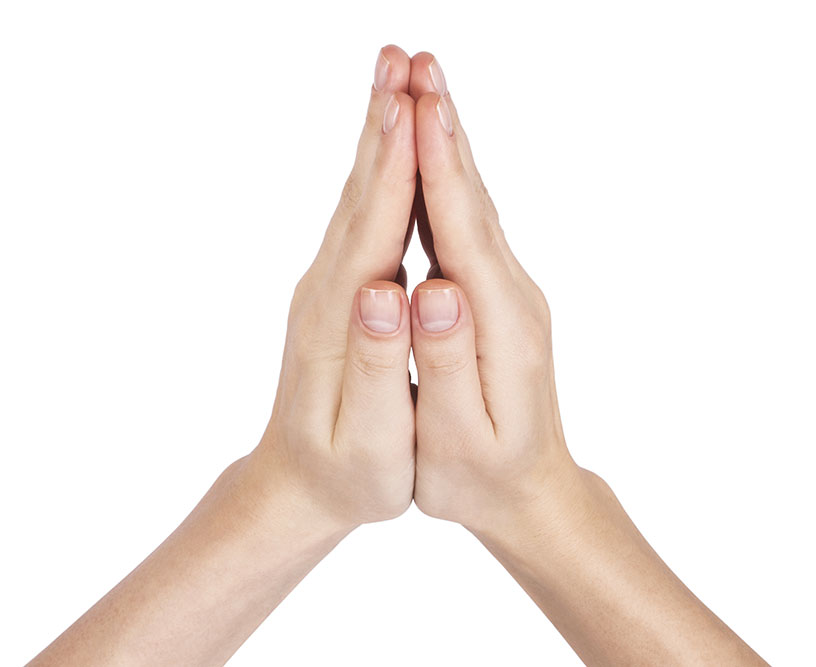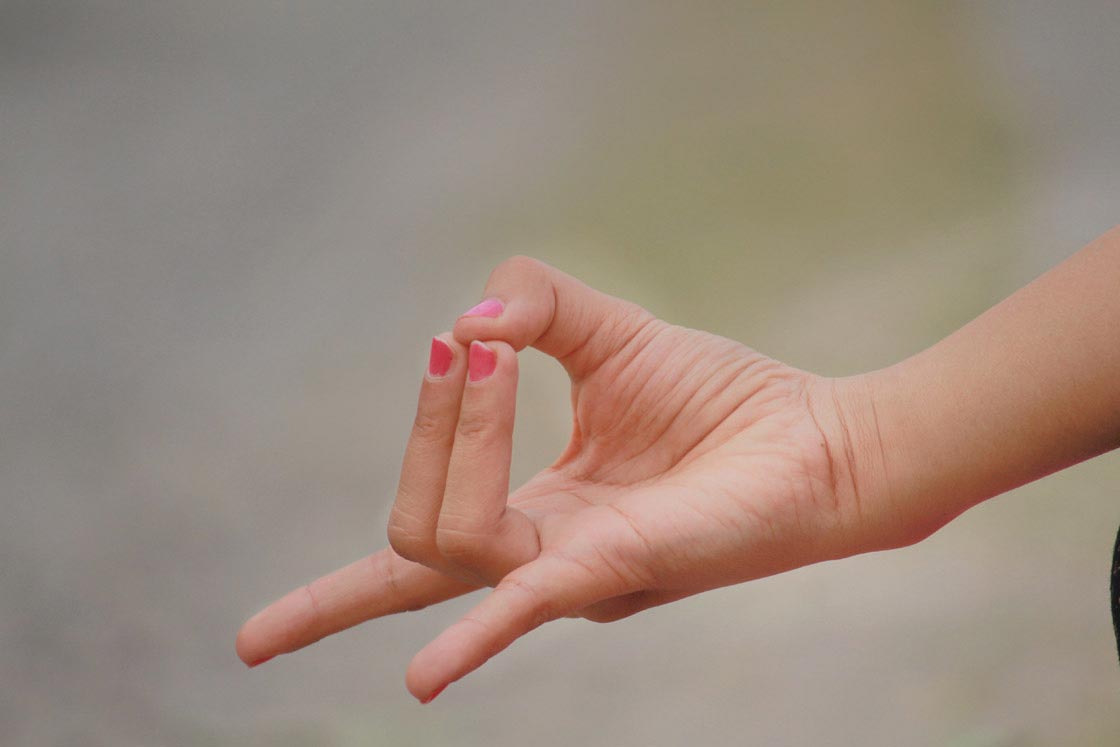The 5 Most Powerful Hand Mudras
Mudras, often referred to as "yoga of the hands," are symbolic hand gestures used in Hindu and Buddhist practices to channel the flow of energy within the body. These gestures are believed to have therapeutic benefits, enhancing physical, emotional, and spiritual well-being.
This article explores the five most powerful hand mudras, detailing their significance, benefits, and how to practice them effectively.
1. Gyan Mudra: The Mudra of Knowledge
 The Gyan Mudra, also known as the Chin Mudra, is one of the most widely recognized and practiced hand mudras. It is associated with wisdom, knowledge, and the expansion of consciousness.
The Gyan Mudra, also known as the Chin Mudra, is one of the most widely recognized and practiced hand mudras. It is associated with wisdom, knowledge, and the expansion of consciousness.
How to Perform Gyan Mudra:
- Sit comfortably in a cross-legged position or on a chair with your back straight.
- Touch the tip of your index finger to the tip of your thumb, forming a circle.
- Keep the other three fingers extended but relaxed.
- Rest your hands on your knees with your palms facing upward.
Benefits of Gyan Mudra:
- Enhances concentration and memory.
- Improves mental clarity and cognitive function.
- Reduces stress and anxiety.
- Promotes spiritual growth and meditation.
Practice Tips:
- Practice Gyan Mudra for 15-30 minutes daily.
- Combine with deep breathing exercises for enhanced benefits.
- Use during meditation to deepen your practice.
2. Anjali Mudra: The Gesture of Reverence
 Anjali Mudra, also known as Namaste Mudra, is a gesture of greeting, respect, and devotion. It is often used at the beginning and end of yoga sessions, as well as in daily greetings in many cultures.
Anjali Mudra, also known as Namaste Mudra, is a gesture of greeting, respect, and devotion. It is often used at the beginning and end of yoga sessions, as well as in daily greetings in many cultures.
How to Perform Anjali Mudra:
- Sit or stand comfortably with your spine straight.
- Bring your palms together in front of your chest, fingers pointing upward.
- Press your palms lightly together, with your thumbs resting against your sternum.
- Close your eyes and bow your head slightly.
Benefits of Anjali Mudra:
- Promotes a sense of inner peace and calm.
- Balances the left and right hemispheres of the brain.
- Enhances focus and concentration.
- Encourages humility, gratitude, and connection with others.
Practice Tips:
- Use Anjali Mudra at the beginning and end of your yoga practice.
- Practice during moments of gratitude or prayer.
- Incorporate into daily greetings to cultivate respect and connection.
3. Prana Mudra: The Mudra of Life Force
 Prana Mudra is a powerful hand gesture that activates the vital life force energy within the body. It is believed to invigorate and rejuvenate the mind and body.
Prana Mudra is a powerful hand gesture that activates the vital life force energy within the body. It is believed to invigorate and rejuvenate the mind and body.
How to Perform Prana Mudra:
- Sit comfortably with your back straight and shoulders relaxed.
- Touch the tips of your ring finger and little finger to the tip of your thumb.
- Keep the index and middle fingers extended but relaxed.
- Rest your hands on your knees with your palms facing upward.
Benefits of Prana Mudra:
- Boosts energy levels and vitality.
- Enhances immune function and overall health.
- Improves vision and reduces eye strain.
- Calms the nervous system and reduces stress.
Practice Tips:
- Practice Prana Mudra for 15-30 minutes daily, preferably in the morning.
- Combine with deep, rhythmic breathing to enhance energy flow.
- Use during moments of fatigue or low energy to rejuvenate the body.
4. Apana Mudra: The Gesture of Purification
 Apana Mudra is known for its detoxifying and purifying effects on the body. It helps in the elimination of waste and toxins, promoting overall health and well-being.
Apana Mudra is known for its detoxifying and purifying effects on the body. It helps in the elimination of waste and toxins, promoting overall health and well-being.
How to Perform Apana Mudra:
- Sit comfortably with your spine erect and shoulders relaxed.
- Touch the tips of your middle finger and ring finger to the tip of your thumb.
- Keep the index finger and little finger extended but relaxed.
- Rest your hands on your knees with your palms facing upward.
Benefits of Apana Mudra:
- Aids in digestion and detoxification.
- Balances the body’s energy systems.
- Promotes emotional release and clarity.
- Supports reproductive health and eases menstrual discomfort.
Practice Tips:
- Practice Apana Mudra for 15-45 minutes daily, especially in the morning.
- Combine with mindful breathing and visualization of cleansing energy.
- Use during detoxification routines or after heavy meals.
5. Dhyana Mudra: The Gesture of Meditation
Dhyana Mudra, also known as the Meditation Mudra, is a hand gesture that promotes deep contemplation and inner peace. It is commonly used in meditation practices to enhance focus and spiritual awareness.
How to Perform Dhyana Mudra:
- Sit comfortably in a cross-legged position or on a chair with your back straight.
- Place your hands on your lap, with your right hand resting on top of your left hand.
- Both palms should face upward, and the tips of your thumbs should touch lightly, forming a triangle.
- Close your eyes and focus on your breath.
Benefits of Dhyana Mudra:
- Deepens meditation and concentration.
- Promotes a sense of tranquility and inner peace.
- Enhances spiritual awareness and connection.
- Reduces stress and mental distractions.
Practice Tips:
- Practice Dhyana Mudra during meditation sessions for at least 20-30 minutes.
- Focus on your breath or a mantra to deepen your practice.
- Use this mudra to calm the mind and center your thoughts before starting your day.
Conclusion
Hand mudras are powerful tools that can enhance physical, mental, and spiritual well-being. By incorporating Gyan Mudra, Anjali Mudra, Prana Mudra, Apana Mudra, and Dhyana Mudra into your daily practice, you can experience their profound benefits. These gestures not only help in channeling energy within the body but also promote a deeper connection with oneself and the universe.
Sources
- Yoga Journal: Understanding the Benefits of Mudras
- Healthline: The Science Behind Mudras
- Himalayan Institute: The Power of Hand Mudras
- Verywell Fit: Mudras and Their Benefits
The Chopra Center: The Importance of Mudras
- Yoga Basics: A Guide to Mudras
- MindBodyGreen: How Mudras Work
- Sadhguru: Mudras for Health and Wellbeing












![[LIVE] Engage2Earn: Veterans Affairs Labor repairs](https://cdn.bulbapp.io/frontend/images/1cbacfad-83d7-45aa-8b66-bde121dd44af/1)









